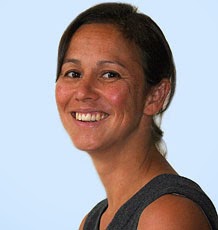From The Glass Cliff project website (psychology.exeter.ac.uk/research/glasscliff):
“Extending the metaphor of the glass ceiling, the glass cliff describes the phenomenon whereby individuals belonging to particular groups are more likely to be found in leadership positions that are associated with a greater risk of failure and criticism.”
Hear about the glass cliff from Professor Michelle Ryan at the next SBCS Athena SWAN seminar Thursday, 20 Nov, 1pm-2pm at the Fogg Lecture Theatre.
_____________________
The School of Biological & Chemical Sciences at QMUL, Athena SWAN Seminar
Beyond the glass ceiling: The glass cliff and the precariousness of women’s leadership positions
Professor Michelle Ryan
Professor of Social and Organisational Pyschology, University of Exeter
Thursday 20 November 2014, 1.00pm to 2.00pm
Fogg Lecture Theatre, Fogg Building, Mile End Campus, Mile End Road, London, E1 4NS
While women are breaking through the glass ceiling in increasing numbers, there may be additional subtle barriers for them to face. Michelle will present a program of research examining the types of leadership positions that women tend to occupy and the precariousness of these roles.
 |
| Professor Michelle Ryan, U of Exeter |
Michelle Ryan is a Professor of Social and Organisational Psychology at the University of Exeter, UK and a (part-time) Professor of Diversity at the University of Groningen, The Netherlands. At the University of Exeter she is the Dean of Postgraduate Research and Director of the University of Exeter Graduate College. She currently holds a British Academy mid-career fellowship examining the role of identity in determining perception of work-life balance. She is involved in a number of other research projects. With Alex Haslam, she has uncovered the phenomenon of the glass cliff, whereby women (and members of other minority groups) are more likely to be placed in leadership positions that are risky or precarious. Research into the glass cliff has been funded by the ESRC and the European Social Fund. In 2005 it was short-listed for the Times Higher Education Supplement Research Project of the Year and was named by the New York Times as one of the top 100 ideas that shaped 2008.